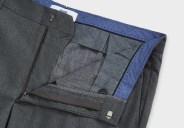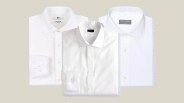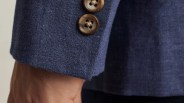Eyeglasses, as we know them today, are an 18th-century invention. A Brit named Edward Scarlett conceptualized what he called “temple glasses,” a pair of lenses posed together with wiring and attached to metal arms that’d wrap around the ear. He wasn’t the first, The College of Optometrists argue. Factually speaking, he may have simply been the first with an advertising budget. Who knows?
By the mid-20th century, eyeglass manufacturers had shifted from using metals and cellulose nitrate to cellulose acetate. The wood pulp-derived material proved stabler than cellulose nitrate and more stylish than bare metals.
But the transition required a little manufacturing magic. The introduction of hinges didn’t happen during the 20th century — Scarlett’s frames were foldable, too — but acetate frames required new, visible hardware to hold everything in place.
What are rivets?
And now we arrived back where we started: getting to the bottom of what the dots, leaves, arrows, bars, and beyond on the front of your frames really do.
Firstly, they’re called rivets. As for why they aren’t all the same? Depending on your glasses’ given hinge type — tenon, spring, hidden or hingeless — there may be different kinds.







